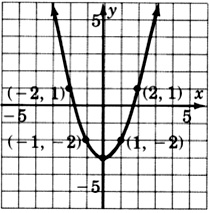11.2: Solutions by Graphing
( \newcommand{\kernel}{\mathrm{null}\,}\)
Systems of Equations
Systems of Equations
A collection of two linear equations in two variables is called a system of linear equations in two variables, or more briefly, a system of equations. The pair of equations
is a system of equations. The brace { is used to denote that the two equations occur together (simultaneously).
Solution to A System of Equations
Solution to a System
We know that one of the infinitely many solutions to one linear equation in two variables is an ordered pair. An ordered pair that is a solution to both of the equations in a system is called a solution to the system of equations. For example, the ordered pair
since
Graphs of Systems of Equations
One method of solving a system of equations is by graphing. We know that the graph of a linear equation in two variables is a straight line. The graph of a system will consist of two straight lines. When two straight lines are graphed, one of three possibilities may result.
The lines intersect at the point
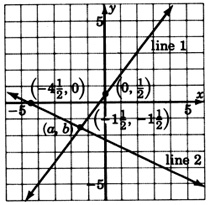
The lines are parallel. They do not intersect. The system has no solution.
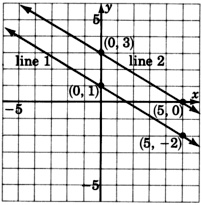
The lines are coincident (one on the other). They intersect at infinitely many points. The system has infinitely many solutions.
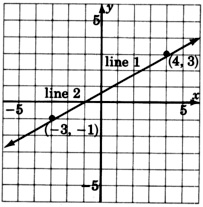
Independent, Inconsistent, and Dependent Systems
Independent Systems
Systems in which the lines intersect at precisely one point are called independent systems. In applications, independent systems can arise when the collected data are accurate and complete. For example,
The sum of two numbers is 10 and the product of the two numbers is 21. Find the numbers.
In this application, the data are accurate and complete. The solution is 7 and 3.
Inconsistent Systems
Systems in which the lines are parallel are called inconsistent systems. In applications, inconsistent systems can arise when the collected data are contradictory. For example,
The sum of two even numbers is 30 and the difference of the same two numbers is 0. Find the numbers.
The data are contradictory. There is no solution to this application.
Dependent Systems
Systems in which the lines are coincident are called dependent systems. In applications, dependent systems can arise when the collected data are incomplete. For example.
The difference of two numbers is 9 and twice one number is 18 more than twice the other.
The data are incomplete. There are infinitely many solutions.
The Method of Solving A System Graphically
To solve a system of equations graphically: Graph both equations.
- If the lines intersect, the solution is the ordered pair that corresponds to the point of intersection. The system is independent.
- If the lines are parallel, there is no solution. The system is inconsistent.
- If the lines are coincident, there are infinitely many solutions. The system is dependent.
Sample Set A
Solve each of the following systems by graphing.
Write each equation in slope-intercept form.
1)
2)
Graph each of these equations:

The lines appear to intersect at the point
Check: Substitute
1)
2)
Write each equation in slope-intercept form.
1)
2)
Graph each of these equations.
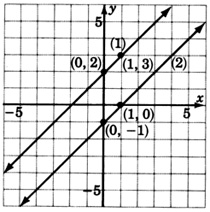
These lines are parallel. This system has no solution. We denote this fact by writing inconsistent.
We are sure that these lines are parallel because we notice that they have the same slope,
Write each equation in slope-intercept form.
1)
2)
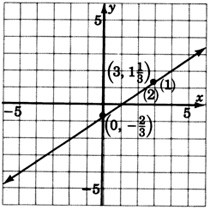
Both equations are the same. This system has infinitely many solutions. We write dependent.
Practice Set A
Solve each of the following systems by graphing. Write the ordered pair solution or state that the system is inconsistent, or dependent.
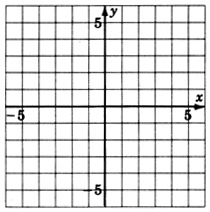
- Answer
-
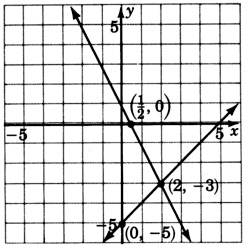

- Answer
-
dependent
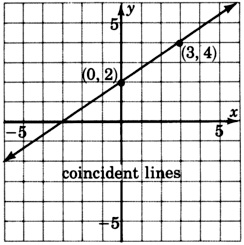

- Answer
-
inconsistent
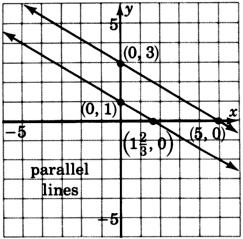

- Answer
-
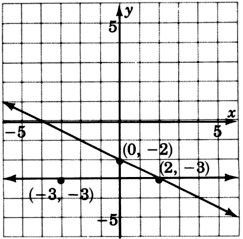
Exercises
For the following problems, solve the systems by graphing. Write the ordered pair solution, or state that the system is inconsistent or dependent.

- Answer
-



- Answer
-



- Answer
-
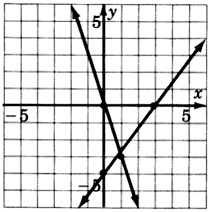


- Answer
-
These coordinates are hard to estimate. This problem illustrates that the graphical method is not always the most accurate.
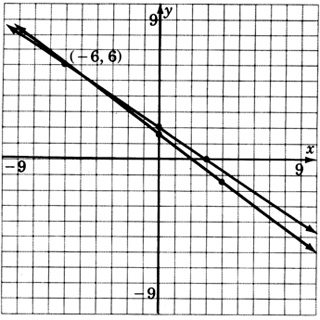


- Answer
-
inconsistent
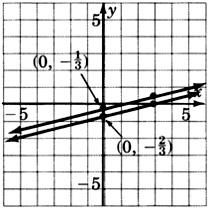


- Answer
-
dependent
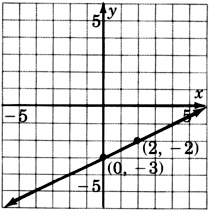

Exercises For Review
Express
- Answer
-
Find the product
Supply the missing word. The _____ of a line is a measure of the steepness of the line.
- Answer
-
slope
Supply the missing word. An equation of the form
Construct the graph of the quadratic equation

- Answer
-
